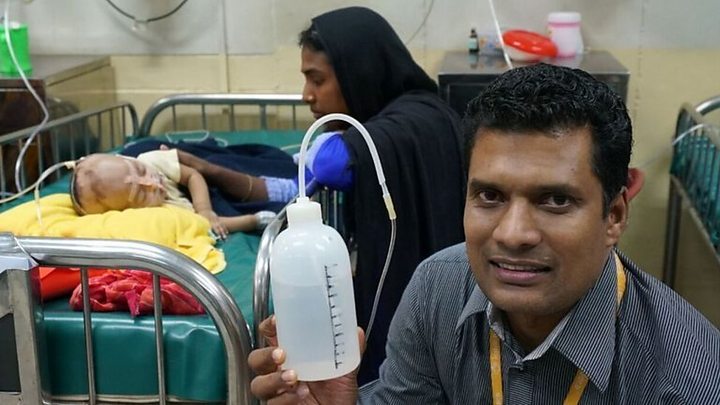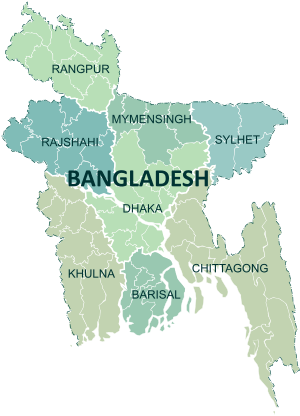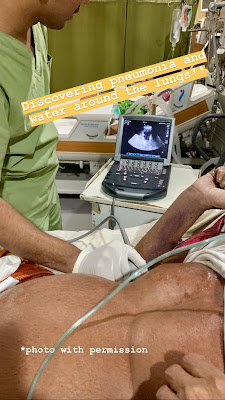I'm not even sure I wanted to write about this. It took me a day to collect my thoughts. But, I think It's important. Before I talk about the loss that occurred in clinic yesterday let me give you a little bit of background of where I am right now and what I'm doing. I'm currently in Cox's Bazaar, Bangladesh, a town that is essentially adjacent to the border of Myanmar. An area where close to 1 million refugees from the Rakhine State in Myanmar migrated to under violent conditions. Many lost children, limbs, significant others, along the way. The devastating fact is that the persecution of the Rohingya is not new, it has been ongoing since the 1940s and has sparked a few large migrations to Bangladesh and other surrounding countires but the most recent one incited in August 2017 when the Myanmar army enacted a series of violent attacks on the Rohingya. The area of land that the largest camps reside on are hilly and suffered the wrath of the rainy season with several homes relocated. Ironically enough, Cox's Bazaar is a beach resort town--a mere 23 Km away reside the camps of thousands and thousands of refugees, living in bamboo huts. The roads that lead to the camps are flanked by these beautiful green rice paddies--the color of Bangladesh.

Yet the closer we get to the Kutopalong camp, one of the largest of the Rohingya camps, we start to see sparse green fields, several tin roofed homes that belong to the host community. In fact, several volunteers in the past as they get closer to the camps, mistake the homes of the host community for those of the Rohingya. The truth is, nearly a million refugees were taken into Bangladesh while the country still has its own poor people who need help--it's very understandable why there exists so many tensions in the area.

We pull into the camp area, bamboo huts greet us. It is here in the Kutupalong Camp #4 that our clinic resides, a place where we can see mostly outpatient issues and there is a small 4 bed acute care area where we can stabilize patients. Compared to my visit here last year, there is now vegetation which is a site for sore eyes. I see homes growing squash along their roofs and chickens running around--a sign of some sustainability though with a backdrop of homes that are strewn together. There is a steep stairwell that leads into the clinic--climbing it is sometimes a challenge with the dry dusty air and the heat--it's quite metaphoric to the feat of getting through a day's clinic.
My first day here was fantastic. I had a phenomenal knowledge-sharing session with the community health volunteers who are Rohingya, to review such things as how to use an inhaler as we so much asthma and COPD here in the clinic as well as review diarrheal disease and the importance of using oral rehydration salts.
(all photos have been taken w/ permission)
My second day started out EXTREMELY busy. One of my first patients was a young woman, 18 years of age. She presented with left breast pain and clearly had a severe infection. She had a very high fever, she was shivering and her blood pressure was quite low, she looked "toxic"-a term we use when someone appears very ill. She was accompanied by her sister and her mother who were helping watch her 3 month old baby, a healthy baby girl. We started to resuscitate the patient--starting an IV and giving saline. We used a blood pressure cuff to maximize the rate at which we were giving her fluids.

We were able to give her antibiotics through her IV within an hour of her being in the clinic. Her baby was interactive and well throughout most of the morning, being brought in periodically to see her mother. The mother remained quite ill and we were discussing referring her to a higher level facility for continuous IV antibiotics and fluids as we have the ability to stabilize but then if someone does not turn around quickly we need to refer them out. The patient herself was declining referral as she just wanted to go home--during that discussion the baby was brought in as it seemed like something was wrong. I looked at this beautiful child--who at first glance appeared to be sleeping, initially the baby was given to the mother to feed but very quickly we realized something was very wrong, within seconds we started CPR, an ambu-bag was retrieved and oxygen and respirations were administered. emergency medications were administered. I felt like I was having an out of body experience--as I continued chest compressions all I could think about was--where do we go from here if we can revive this baby? There is ONE medical ICU bed in all the camps--and there are limited neonatal ICUs and none are close by. After 20 minutes of CPR the child remained pulseless. We called the time of death. The deafening screams of the family were overwhelming for all of us. As I stepped aside for a minute to collect myself, one of the translators who is also Rohingya said to me, " the messenger of death passes freely among us". He said this with such ease--again emphasizing that his community has been through SO much that it is not beyond reason to have seen death several times.
I am telling you this story for one very big reason--to try and help everyone understand just what kind of dire situation these people are in. I cannot explain why that baby died, it's a complete mystery to all of us involved. I can tell you that even had the baby survived this cardiac arrest it is quite unlikely she would have survived much longer given how limited the resources are across the region. The field hospitals here are for emergent, salvageable cases. I maintain hope because if the Rohingya can maintain their hope then I certainly must.
Needless to say, the baby's mother and remainder of her family went home. I remained concerned about her all night, worrying she herself would not survive because of how sick she was. We sent a community health volunteer to her home this morning to follow-up--to request that she seek medical attention, but of course we did not expect her to come back to our clinic given the trauma of what happened there. She was sent home yesterday with oral antibiotics as a back up--and had continued to take them, she was doing OK and actually requested that she come back to our clinic to see our physicians--she trusted us as she felt that the only reason she was still alive was because of the care we were able to provide. I cannot imagine what she must be going through. We all needed time to process just what happened--but I can say, the team at the MedGlobal Clinic in Kutupalong were phenomenal, everyone responded immediately, the room was as calm as it could be--I couldn't be prouder of the team involved. We tried our best, we tried everything within the resources that we had...
And this morning--we all had to wake up and come back to work again, trying our best to put what happened behind us and to learn as much as we could from it.
Signing off for today.
































